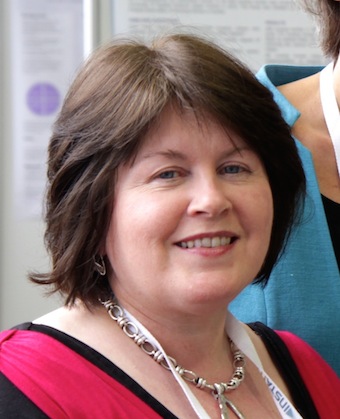Rapport Claeys/Leonetti : ni euthanasie, ni suicide assisté mais droit à une sédation profonde et continue
Paris, le vendredi 12 décembre 2014 –
Il y a des mots dont
l’absence résonne davantage que leur présence. Pendant toute la
campagne électorale pour les présidentielles, François Hollande n’a
jamais prononce le mot « euthanasie ». Aujourd’hui, recevant le
rapport des députés Alain Claeys (PS) et Jean Leonetti (UMP) sur
l’accompagnement de la fin de vie, il n’a pas plus choisi de nommer
cette pratique. Il faut dire que le texte remis par les deux élus
au chef de l’Etat n’en fait pas plus mention.
Sédation profonde et continue
Le consensus auquel sont parvenus les deux députés, qui
connaissaient originellement des positions éloignées et qui surtout
ont entendu de nombreuses personnes aux convictions
particulièrement tranchées, préconise de ne pas autoriser dans
notre pays le suicide assisté et l’euthanasie. « Je pense qu’à
partir du moment où on lève un interdit, on ouvre la voie à de plus
en plus de transgressions » a notamment commenté Jean
Leonetti, dans une interview accordée à l’Obs. Des évolutions sont
cependant proposées pour « permettre aux gens de partir
doucement et sans souffrance » a encore expliqué le député.
D’abord, les deux élus suggèrent d’autoriser la possibilité de
mettre en œuvre une sédation profonde et continue. En pratique, cet
endormissement réalisé grâce à des produits anesthésiants n’ayant
pas pour but premier d’entraîner la mort (mais qui pourraient
incidemment la provoquer) pourra être une réponse aux patients
conscients atteints de douleurs incurables et proches de la
mort qui exprimeraient le souhait d’une fin différente. Cette
sédation profonde et continue pourra également être mise en œuvre
chez les sujets maintenus artificiellement en vie. Elle contribuera
à faire évoluer les pratiques observées dans certains soins
palliatifs, où les patients sous sédation, sont parfois « réveillés
» afin que leur « consentement » à cette méthode puisse de
nouveau être recueilli.
Force contraignante des directives anticipées
Autre évolution de la loi Leonetti préconisée par le rapport :
donner aux directives anticipées une force contraignante, dont
elles ne jouissent pas aujourd’hui. Selon les termes actuels de la
loi, les équipes médicales doivent aujourd’hui se contenter de «
tenir compte » de ces directives lorsqu’elles existent, au
moment d’évoquer la situation d’un patient en fin de vie. Afin que
la volonté des malades soit mieux entendue et respectée, Alain
Claeys et Jean Leonetti jugent que les directives anticipées
devraient dans l’avenir s’imposer aux praticiens. Reste à savoir si
ce caractère nouveau entraînera davantage de Français à rédiger de
telles directives (qui pourraient selon le vœu d’Alain Claeys et
Jean Leonetti être connues grâce à la simple consultation de la
carte vitale). De plus cette recommandation ne permet pas de
répondre aux questions concernant la validité de ces directives
dans le temps et en fonction des situations. Enfin, ce rapport, une
nouvelle fois, insiste sur l’importance de développer dans notre
pays la culture des soins palliatifs.
Des partisans de la légalisation de l’euthanasie déçus
Recevant ces propositions, le chef de l’Etat a indiqué que ces
dernières allaient faire l’objet d’un débat sans vote à l’Assemblée
nationale dès le mois de janvier. Les élus discuteront sur la base
d’une « déclaration » établie par le gouvernement, qui
outre les recommandations sur la sédation profonde et les
directives anticipées, insistera également sur la mise en place
d’un « enseignement spécifique » sur ce sujet au
cours des études médicales et paramédicales dès la rentrée
2015. Dans le sillage de ce débat, une proposition de loi devrait
être déposée, sans qu’un calendrier précis n’ait été annoncé par
François Hollande. Solennel et grave, ce dernier a rappelé que
cette question constituait le « sujet le plus délicat, le plus
lourd, le plus complexe ». « Le temps est venu (…). Mourir
dans la dignité pour vivre pleinement sa vie : telle est
aujourd’hui la volonté que le législateur mettra dans le droit de
notre pays (…). Ce sera une grande avancée » a-t-il encore
affirmé.
Une opinion que bien sûr ne partageront pas les partisans d’une
légalisation de l’euthanasie et/ou du suicide assisté dans notre
pays qui à maintes reprises ont déjà manifesté leur déception face
à l’absence d’une loi allant dans ce sens. Pour les professionnels
de santé, au contraire, les préconisations d’Alain Clayes et de
Jean Leonetti pourraient être lues comme le fruit d’un consensus
éclairé et intelligent qui contribuera à mieux répondre aux
attentes des patients et de leurs proches.
Aurélie Haroche

 Fin de vie, la « voie française » en péril ?
Fin de vie, la « voie française » en péril ?

